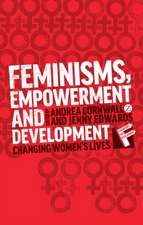Gilbert and Gubar's The Madwoman in the Attic after Thirty Years
Editat de Annette R. Federico Cuvânt înainte de Sandra M. Gilberten Limba Engleză Paperback – 25 ian 2011 – vârsta ani
When it was published in 1979, Sandra M. Gilbert and Susan Gubar's The Madwoman in the Attic: The Woman Writer and the Nineteenth-Century Literary Imaginationwas hailed as a pathbreaking work of criticism, changing the way future scholars would read Jane Austen, Mary Shelley, the Brontës, George Eliot, and Emily Dickinson. This thirtieth-anniversary collection adds both valuable reassessments and new readings and analyses inspired by Gilbert and Gubar’s approach. It includes work by established and up-and-coming scholars, as well as retrospective accounts of the ways in which The Madwoman in the Attic has influenced teaching, feminist activism, and the lives of women in academia.
These contributions represent both the diversity of today’s feminist criticism and the tremendous expansion of the nineteenth-century canon. The authors take as their subjects specific nineteenth- and twentieth-century women writers, the state of feminist theory and pedagogy, genre studies, film, race, and postcolonialism, with approaches ranging from ecofeminism to psychoanalysis. And although each essay opens Madwoman to a different page, all provocatively circle back—with admiration and respect, objections and challenges, questions and arguments—to Gilbert and Gubar's groundbreaking work.
These contributions represent both the diversity of today’s feminist criticism and the tremendous expansion of the nineteenth-century canon. The authors take as their subjects specific nineteenth- and twentieth-century women writers, the state of feminist theory and pedagogy, genre studies, film, race, and postcolonialism, with approaches ranging from ecofeminism to psychoanalysis. And although each essay opens Madwoman to a different page, all provocatively circle back—with admiration and respect, objections and challenges, questions and arguments—to Gilbert and Gubar's groundbreaking work.
The essays are as diverse as they are provocative. Susan Fraiman describes how Madwoman opened the canon, politicized critical practice, and challenged compulsory heterosexuality, while Marlene Tromp tells how it elegantly embodied many concerns central to second-wave feminism. Other chapters consider Madwoman’s impact on Milton studies, on cinematic adaptations of Wuthering Heights, and on reassessments of Ann Radcliffe as one of the book’s suppressed foremothers.
In the thirty years since its publication, The Madwoman in the Attic has potently informed literary criticism of women’s writing: its strategic analyses of canonical works and its insights into the interconnections between social environment and human creativity have been absorbed by contemporary critical practices. These essays constitute substantive interventions into established debates and ongoing questions among scholars concerned with defining third-wave feminism, showing that, as a feminist symbol, the raging madwoman still has the power to disrupt conventional ideas about gender, myth, sexuality, and the literary imagination.
Preț: 289.70 lei
Nou
Puncte Express: 435
Preț estimativ în valută:
55.43€ • 57.88$ • 45.78£
55.43€ • 57.88$ • 45.78£
Carte tipărită la comandă
Livrare economică 15-29 aprilie
Preluare comenzi: 021 569.72.76
Specificații
ISBN-13: 9780826219275
ISBN-10: 0826219276
Pagini: 328
Dimensiuni: 156 x 235 x 25 mm
Greutate: 0.48 kg
Ediția:First Edition
Editura: University of Missouri Press
Colecția University of Missouri
ISBN-10: 0826219276
Pagini: 328
Dimensiuni: 156 x 235 x 25 mm
Greutate: 0.48 kg
Ediția:First Edition
Editura: University of Missouri Press
Colecția University of Missouri
Notă biografică
Annette R. Federico is Professor of English at James Madison University and author of Idol of Suburbia: Marie Corelli and Late-Victorian Literary Culture.
Descriere
Published in 1979, Gilbert and Gubar's The Madwoman in the Atticwas hailed as a pathbreaking work of criticism. This thirtieth-anniversary collection adds both valuable reassessments and new readings and analyses. The authors take as their subjects specific nineteenth- and twentieth-century women writers, the state of feminist theory and pedagogy, genre studies, film, race, and postcolonialism, with approaches ranging from ecofeminism to psychoanalysis.











